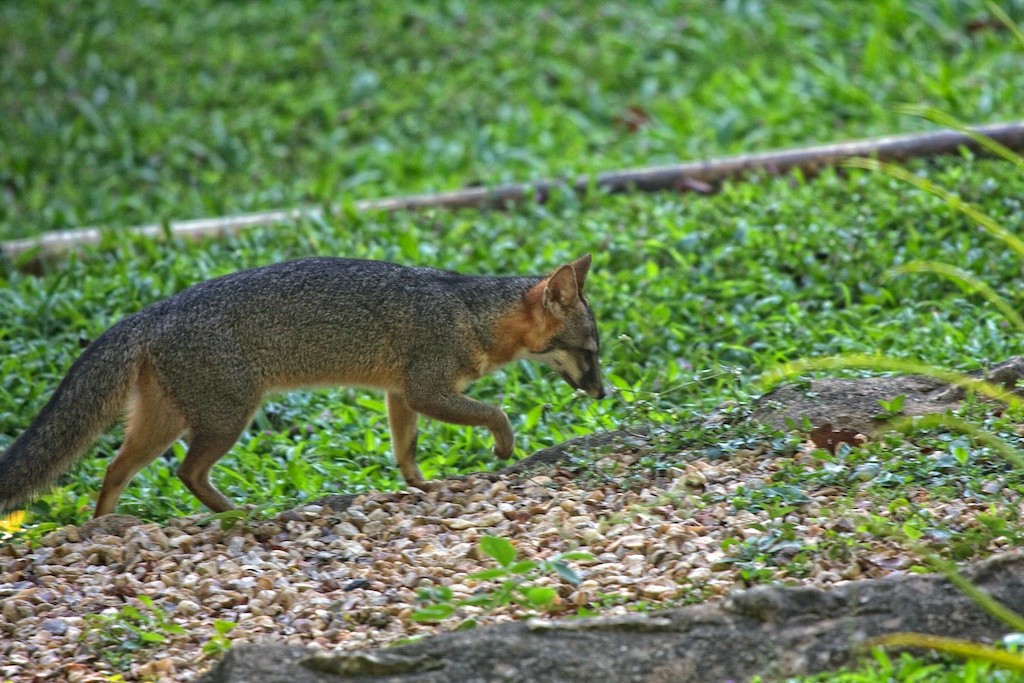Gray fox
A species of Tailed dog, Also known as Tree fox, Florida gray fox Scientific name : Urocyon cinereoargenteus Genus : Tailed dog
Gray fox, A species of Tailed dog
Also known as:
Tree fox, Florida gray fox
Scientific name: Urocyon cinereoargenteus
Genus: Tailed dog
Content
Description General Info
 Photo By lowjumpingfrog , used under CC-BY-2.0 /Cropped and compressed from original
Photo By lowjumpingfrog , used under CC-BY-2.0 /Cropped and compressed from original Description
The gray fox is mainly distinguished from most other canids by its grizzled upper parts, black stripe down its tail and strong neck, while the skull can be easily distinguished from all other North American canids by its widely separated temporal ridges that form a U-shape. There is little sexual dimorphism, save for the females being slightly smaller than males. The gray fox ranges from 76 to 112.5 cm (29.9 to 44.3 in) in total length. The tail measures 27.5 to 44.3 cm (10.8 to 17.4 in) of that length and its hind feet measure 100 to 150 mm (3.9 to 5.9 in). The gray fox typically weighs 3.6 to 7 kg (7.9 to 15.4 lb), though exceptionally can weigh as much as 9 kg (20 lb). It is readily differentiated from the red fox by the lack of "black stockings" that stand out on the latter and the stripe of black hair that runs along the middle of the tail as well as individual guard hairs being banded with white, gray, and black. The gray fox displays white on the ears, throat, chest, belly and hind legs. In contrast to all Vulpes and related (Arctic and fennec) foxes, the gray fox has oval (instead of slit-like) pupils. The dental formula of the U. cinereoargenteus is 3.1.4.23.1.4.3 = 42. 
General Info
Lifespan
6-10 years
Diet
Gray fox exhibits an omnivorous diet, mainly consuming fruits and insects. Its nutritional intake also includes small mammals, birds, eggs and roots, showing a dietary adaptability to diverse ecological conditions.
Appearance
Gray fox is a medium-sized mammal with an elongated body and a fluffy tail. Their bushy fur predominantly ranges from silver to dusky gray, with a creamy underbelly. Distinctive features include a black stripe running down the length of their tail and a pointed muzzle. The coloration of their coat may vary subtly with geographical location and age, turning more reddish during winter in elder individuals.
Behavior
Gray fox is primarily nocturnal, with a diet comprising small mammals, insects, fruits, and vegetables. This omnivorous creature demonstrates considerable adaptability in its foraging strategies. Typically solitary, it occasionally forms loosely associated familial groups. Gray fox marks territory through scent-marking, further reinforcing its solitary disposition. It exhibits a remarkable ability to climb trees, a unique behaviour for its species, aiding evasion of predators.
Population
Stable